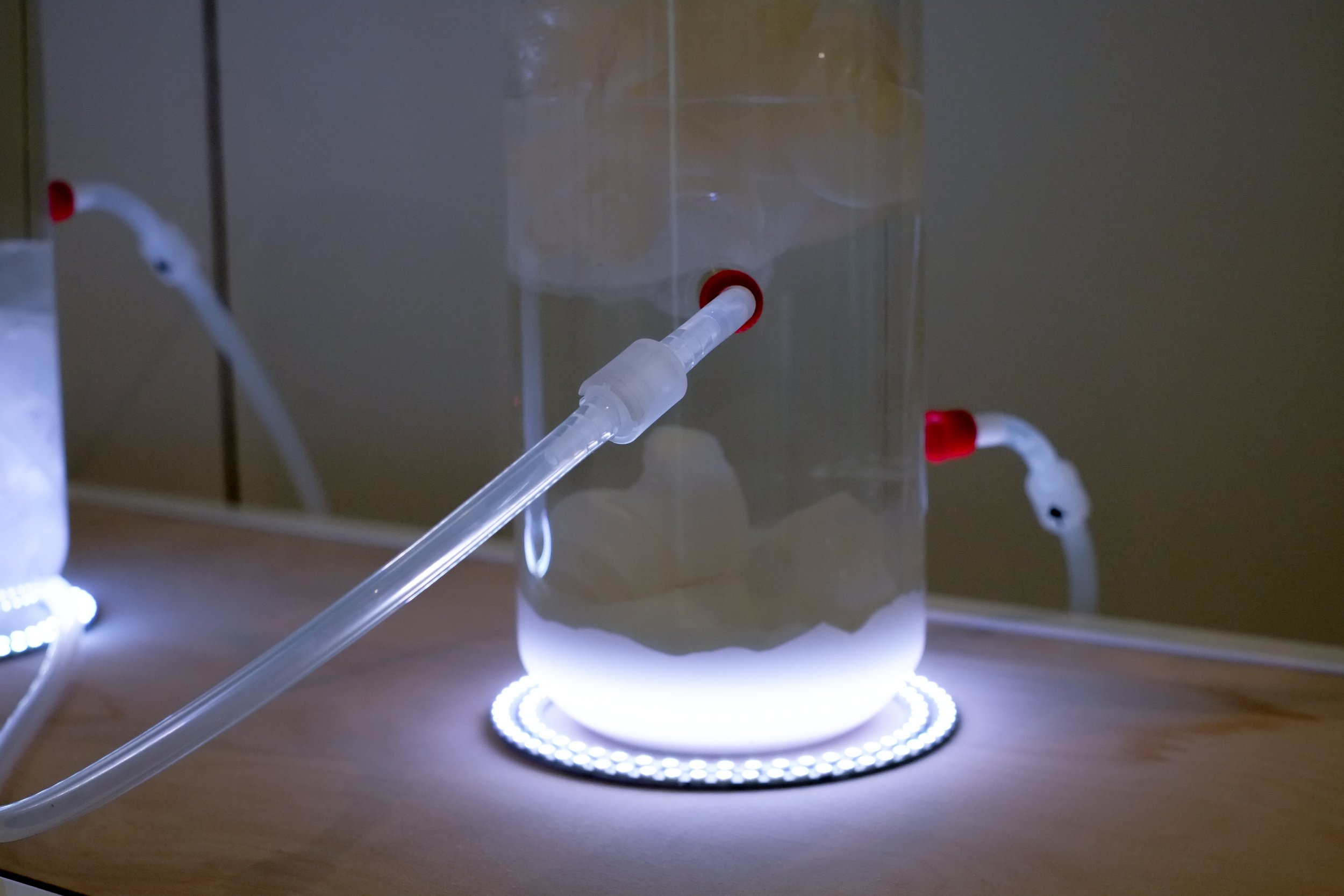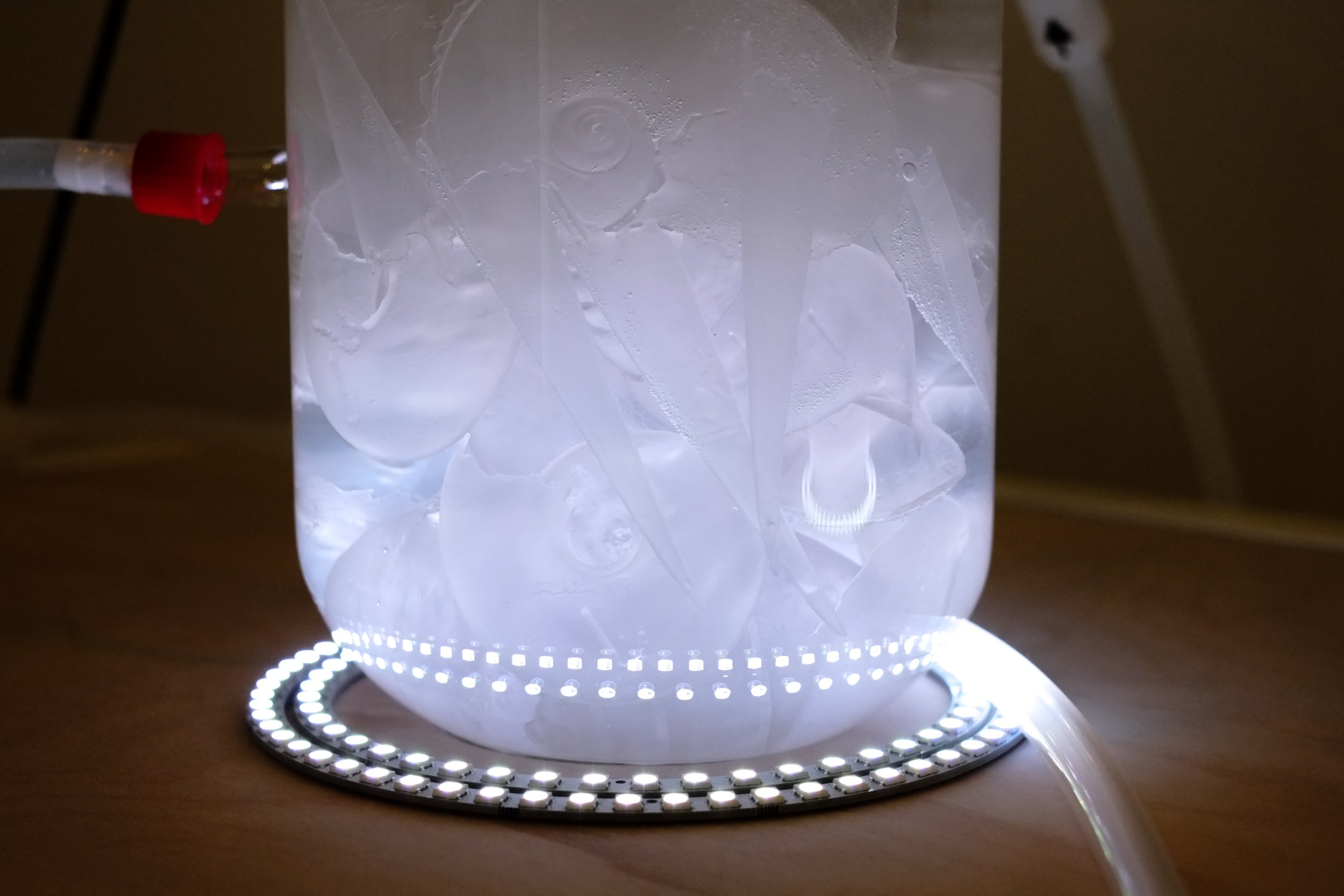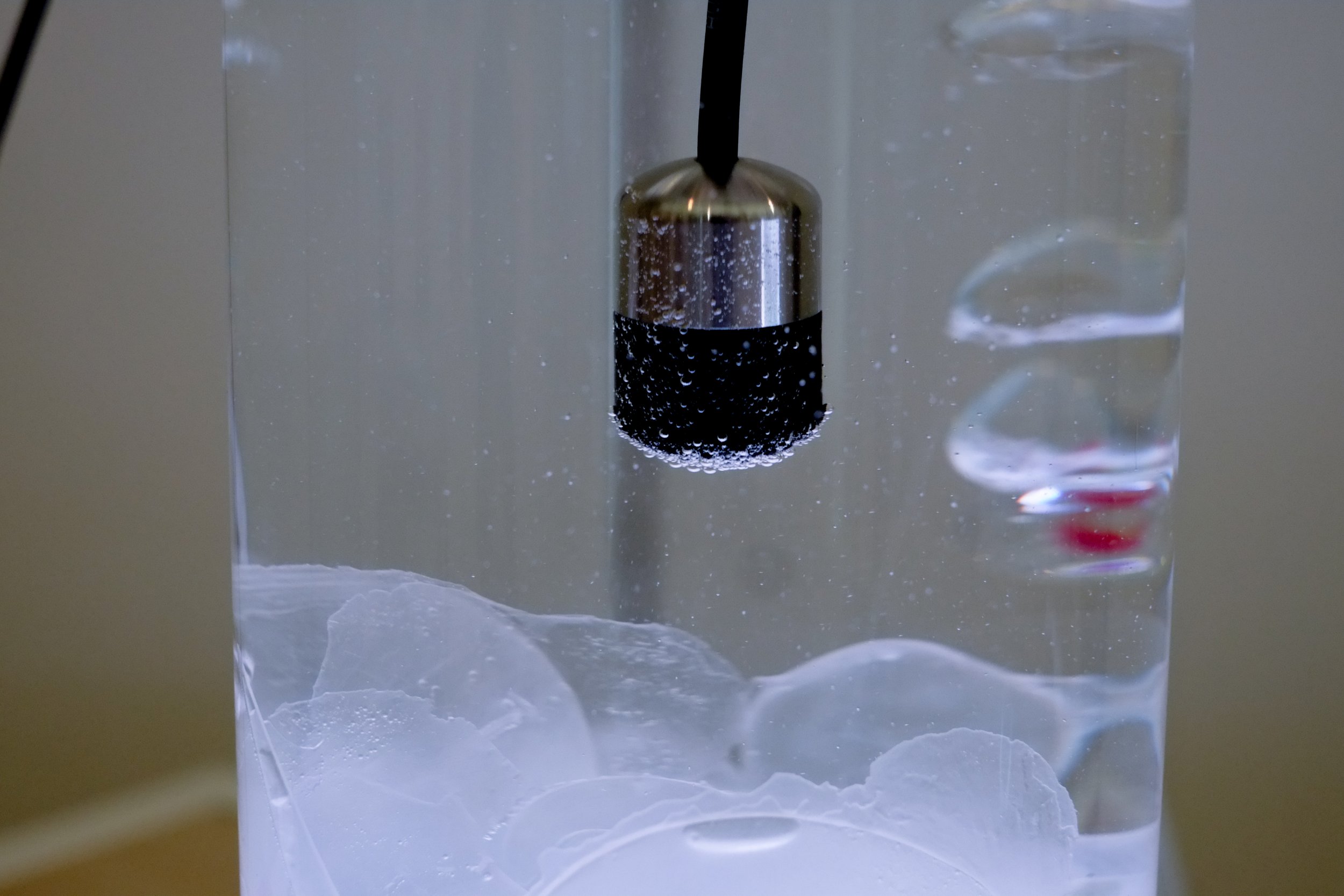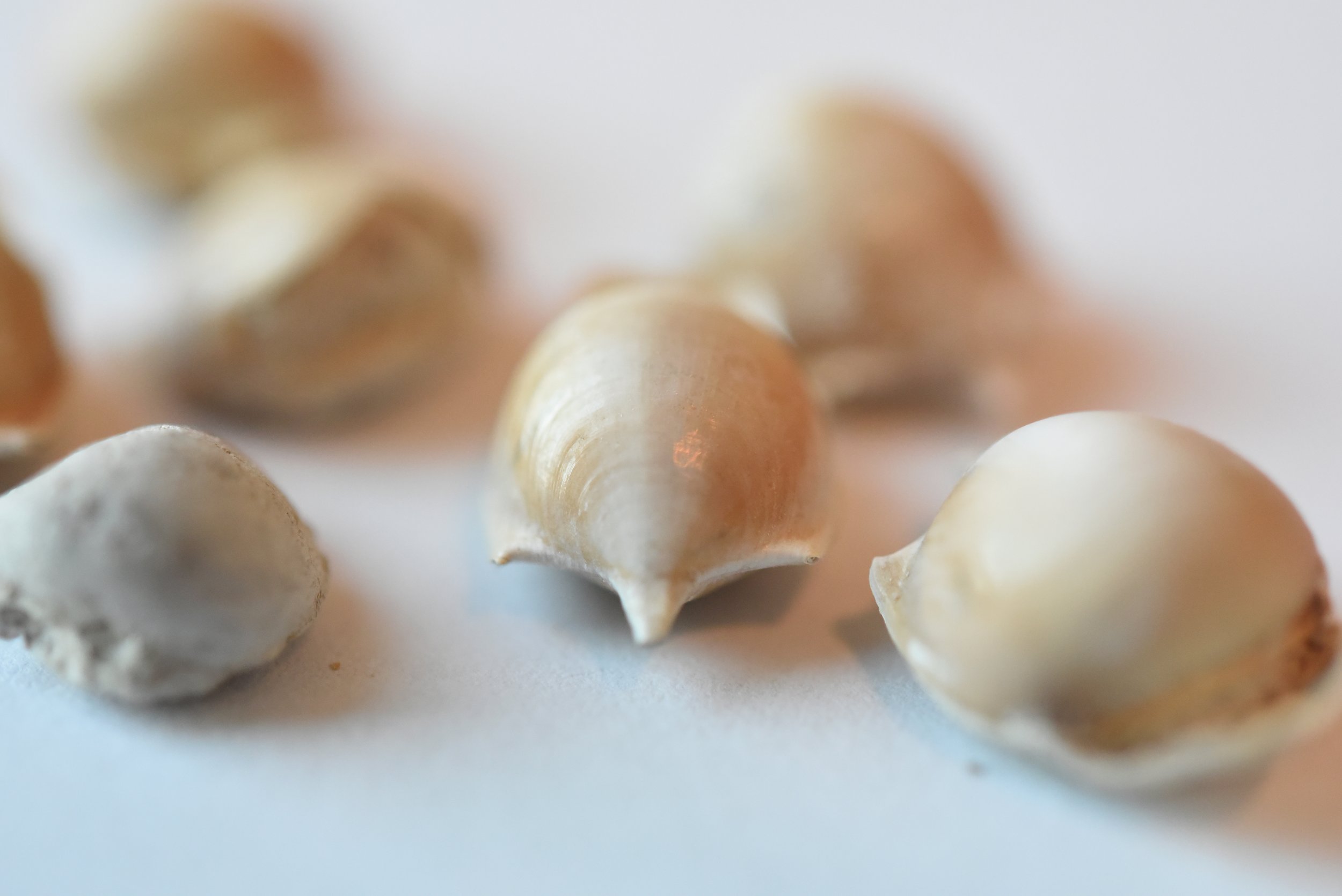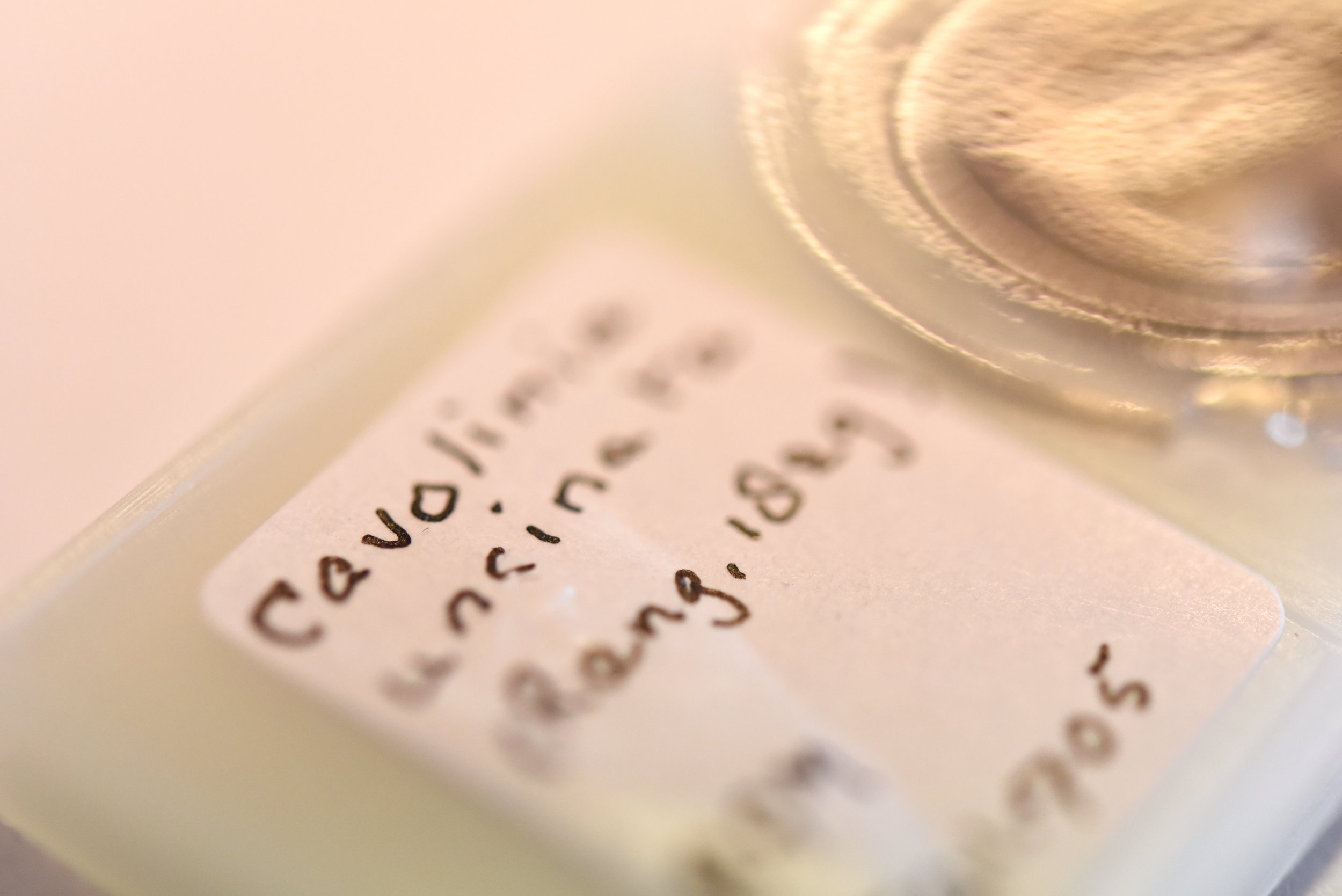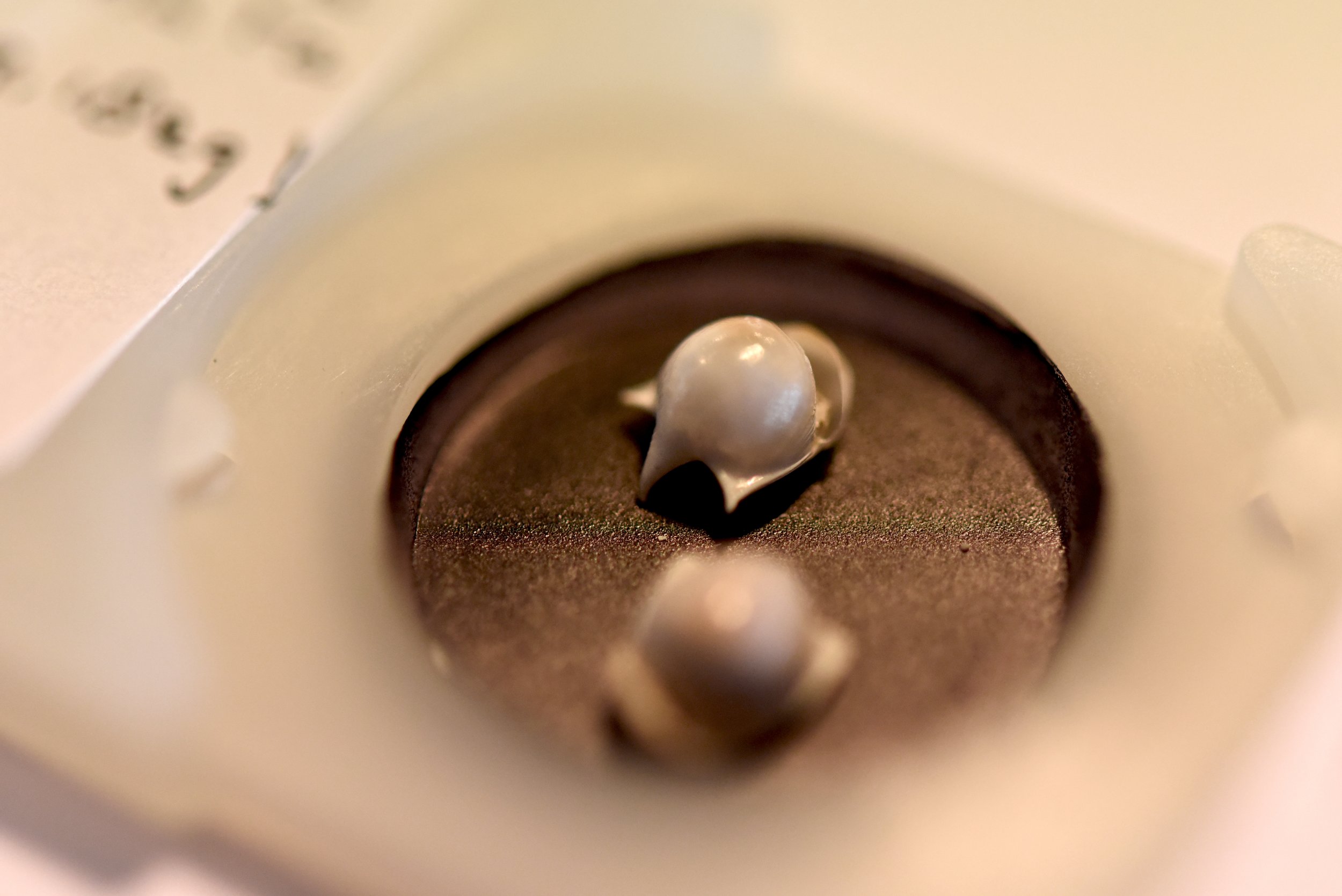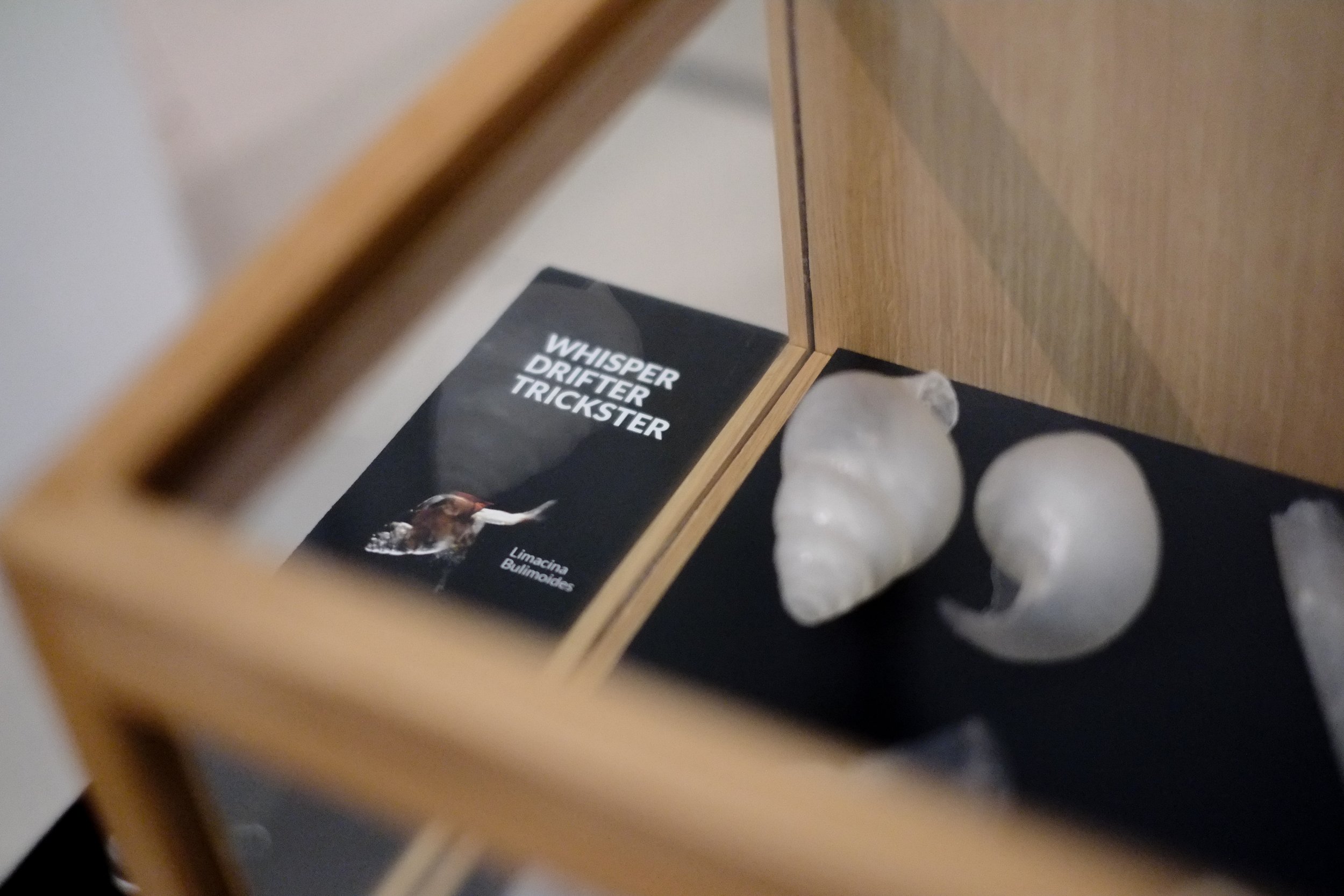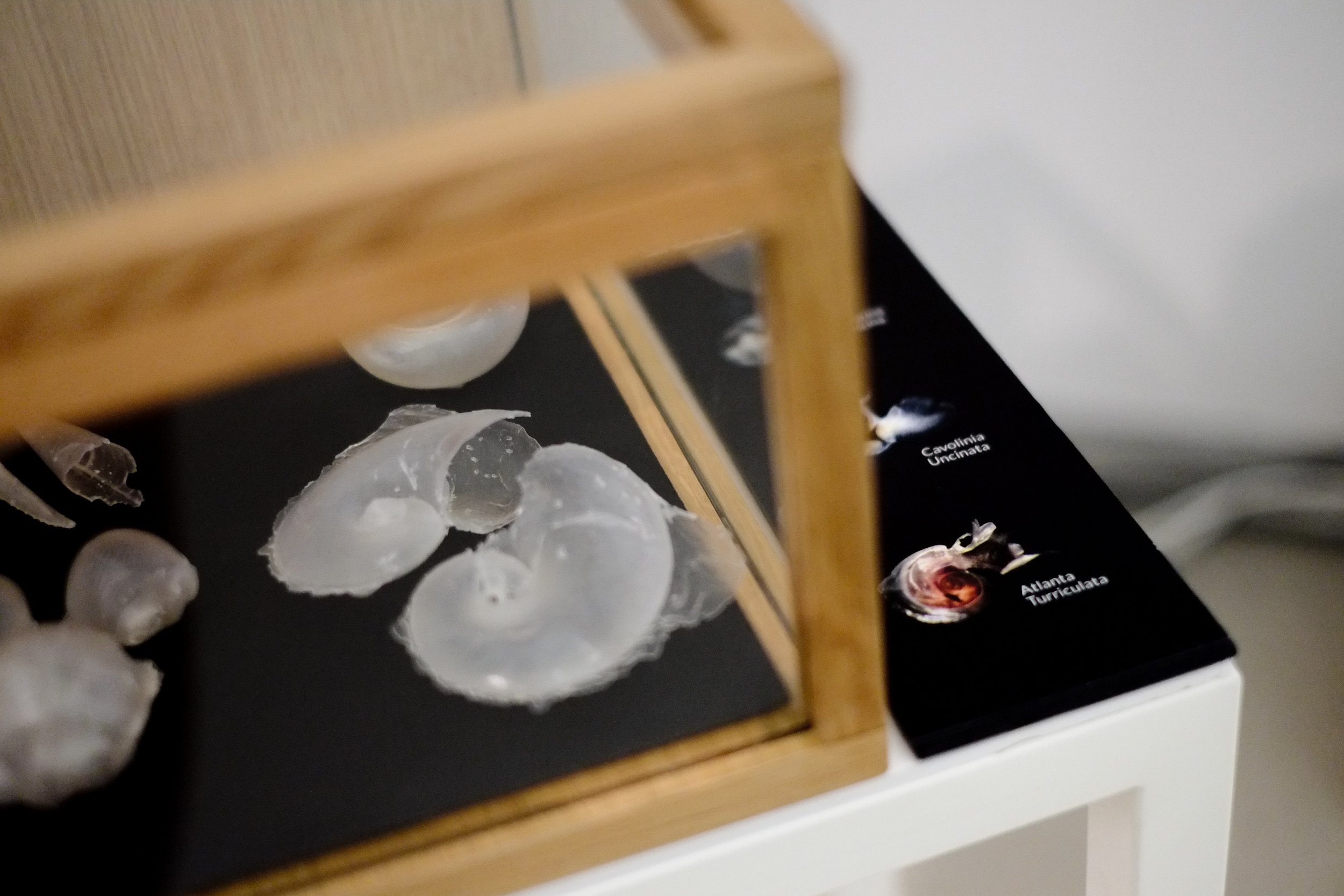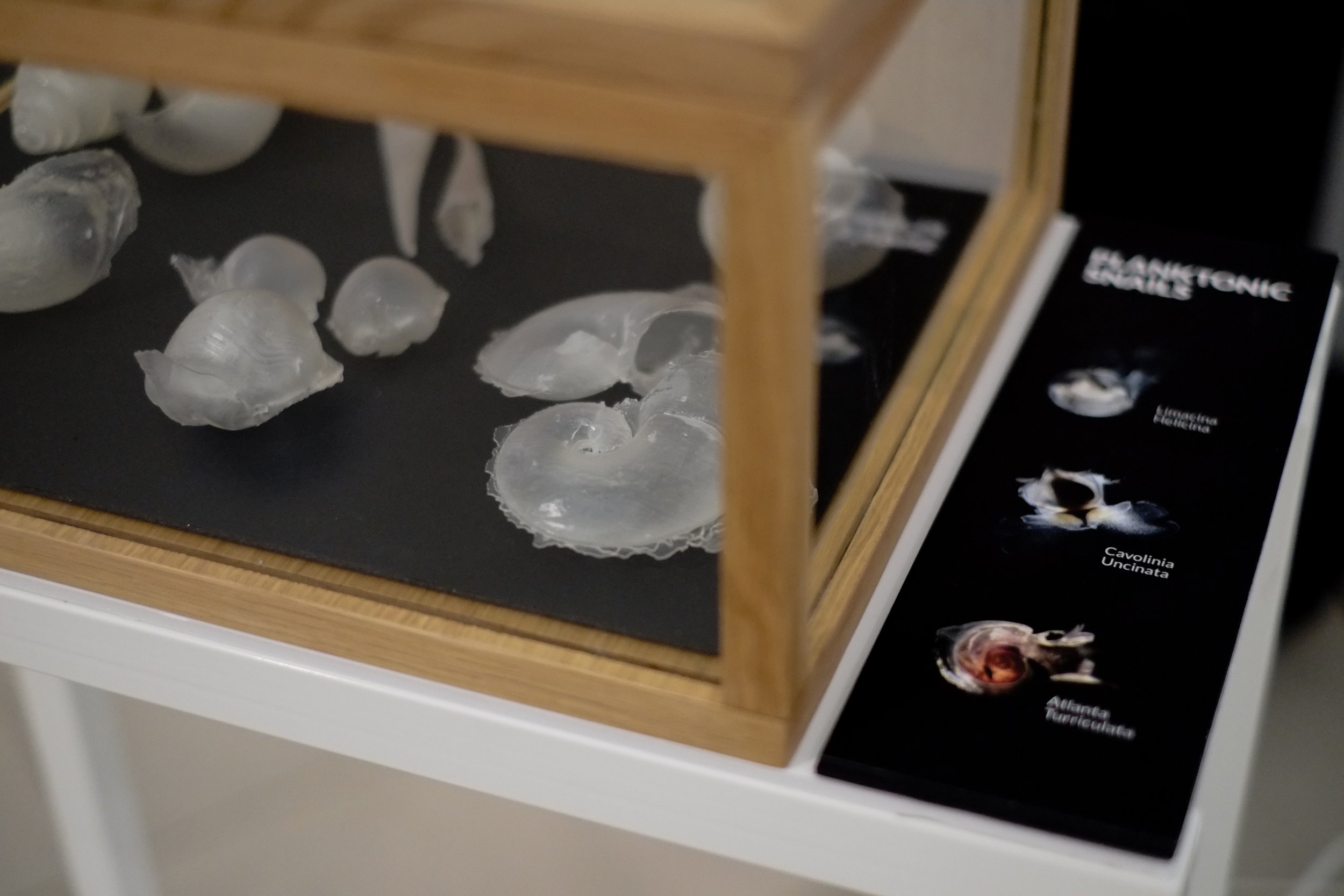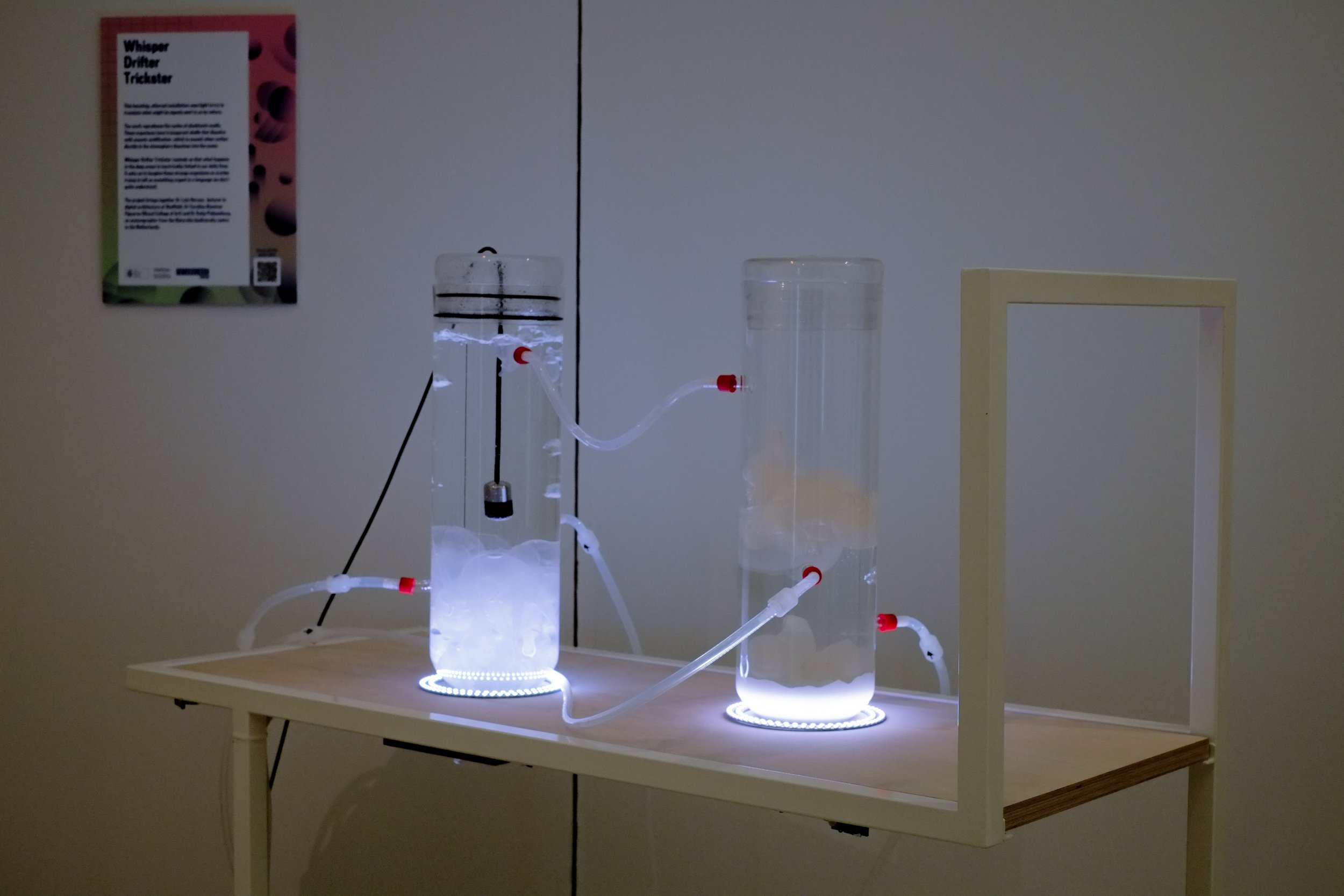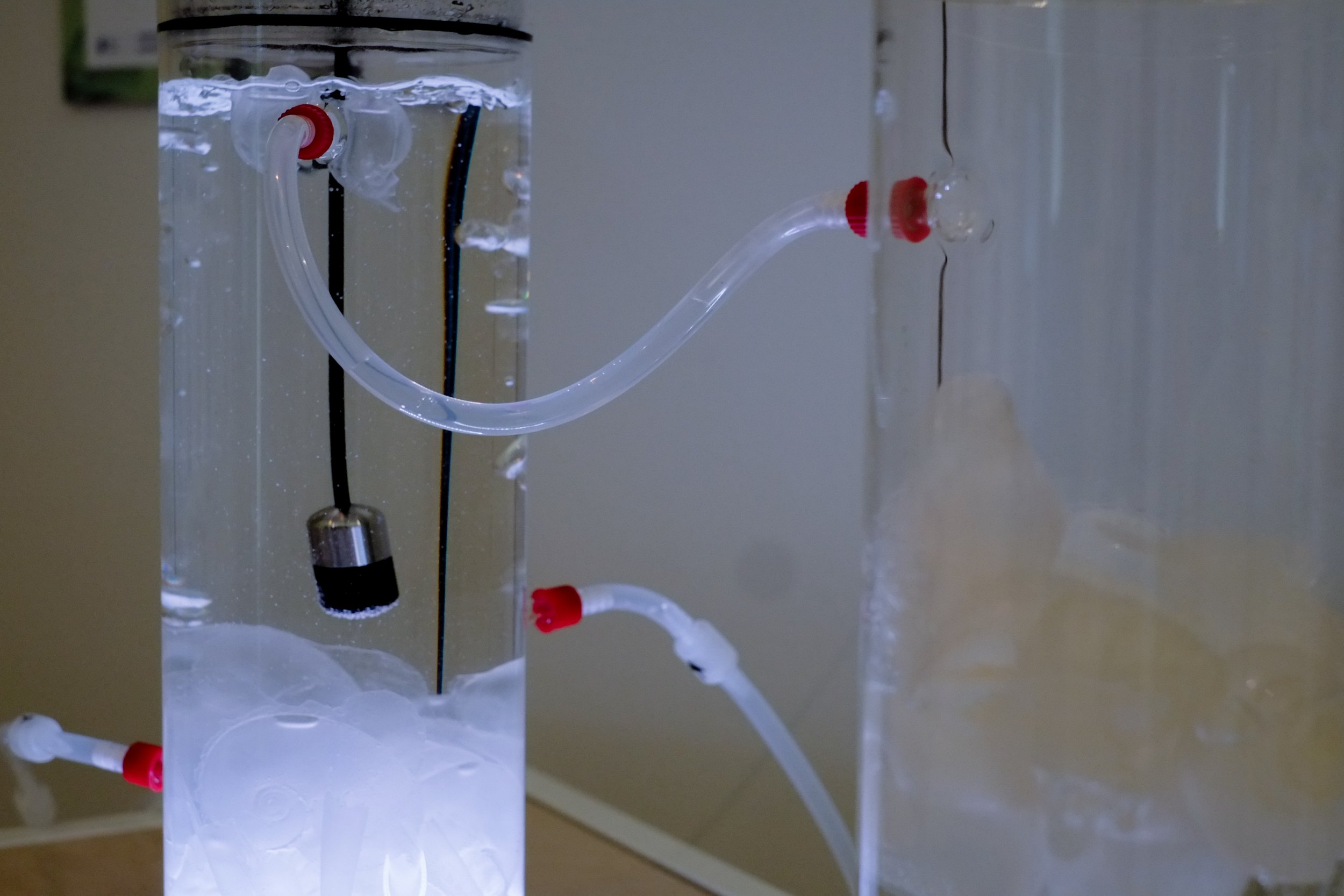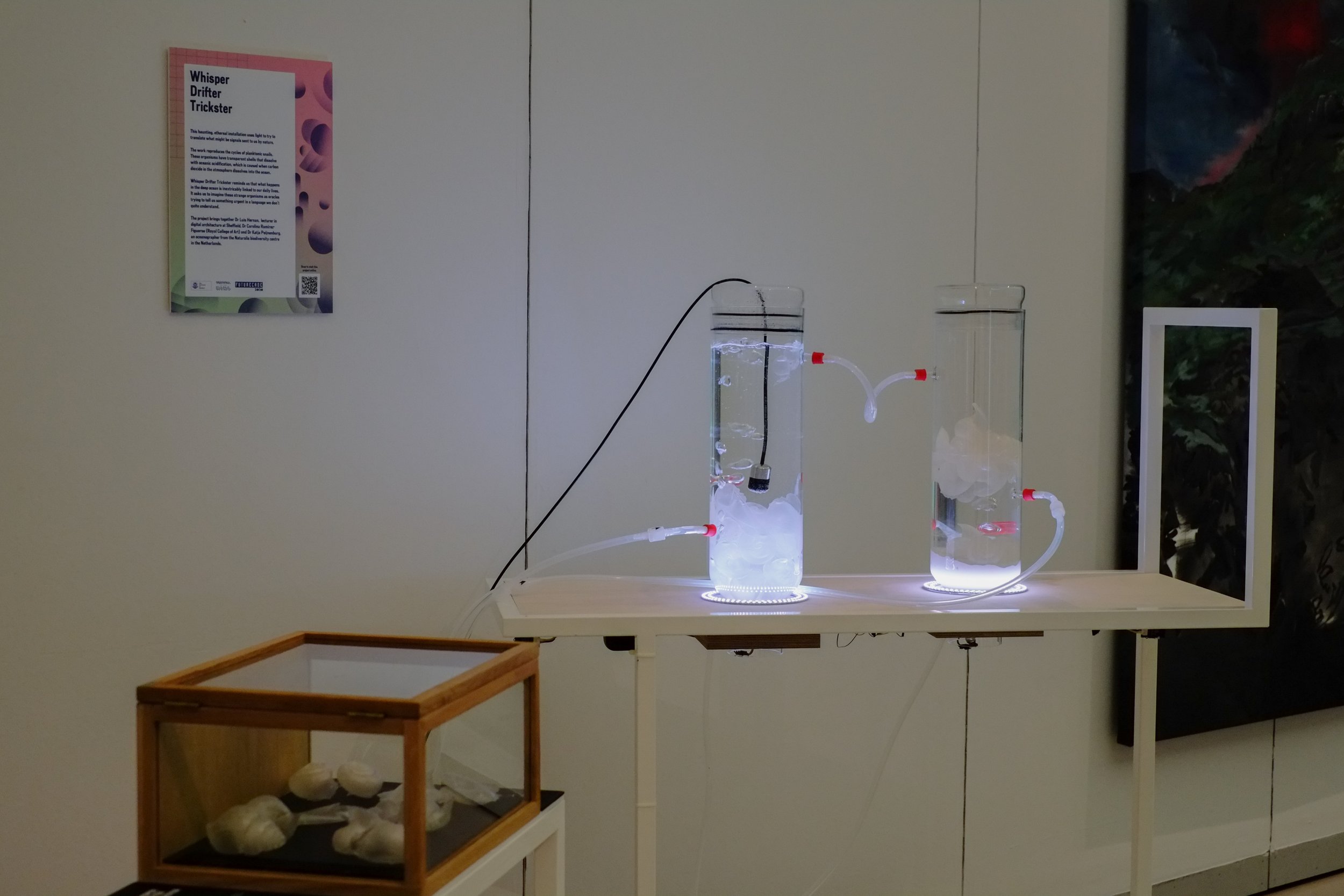
Whisper, Drifter, Trickster
Collaboration with: Dr Luis Hernan, lecturer in digital architecture at Sheffield, and Dr Katja Peijnenburg, an oceanographer from the Naturalis biodiversity center in the Netherlands.
Some species of shelled pteropods, commonly known as sea butterflies, are bio-indicators of ocean acidification. Bio-indicator refers to biological processes use to assess the quality of the environment and how it changes over time. Sea butterflies have thin shells that dissolve as a result of the reduction of pH and carbonate in the ocean. By looking at the pattern and rate of malformation and dissolutions, we can learn more about changes in ocean chemistry. In this project we were interested in exploring the notion of bio-indicator, the common understanding of indicator makes difficult to communicate that these organisms not only point to a single and straightforward cause, but that they are rather connected to a number of potential effects that allude to something more fundamental.
The project proposes to look at a larger, historical understanding of indicator that stretches back to divination, where indicators are used to make sense of our world, and we give them power to affect our behaviour — they have the sensitivity, and are invested with the authority to speak of a larger scale than the human. The project involves an interactive installation where we present the dissolution process that sea butterflies and provide the space to reflect on the role of these organisms to speak to us about the material processes of the Anthropocene.
The project was exhibited at the Festival of the mind at Sheffield in 2020. As part of the exhibition, we produced a podcast where we discuss our collaboration.
